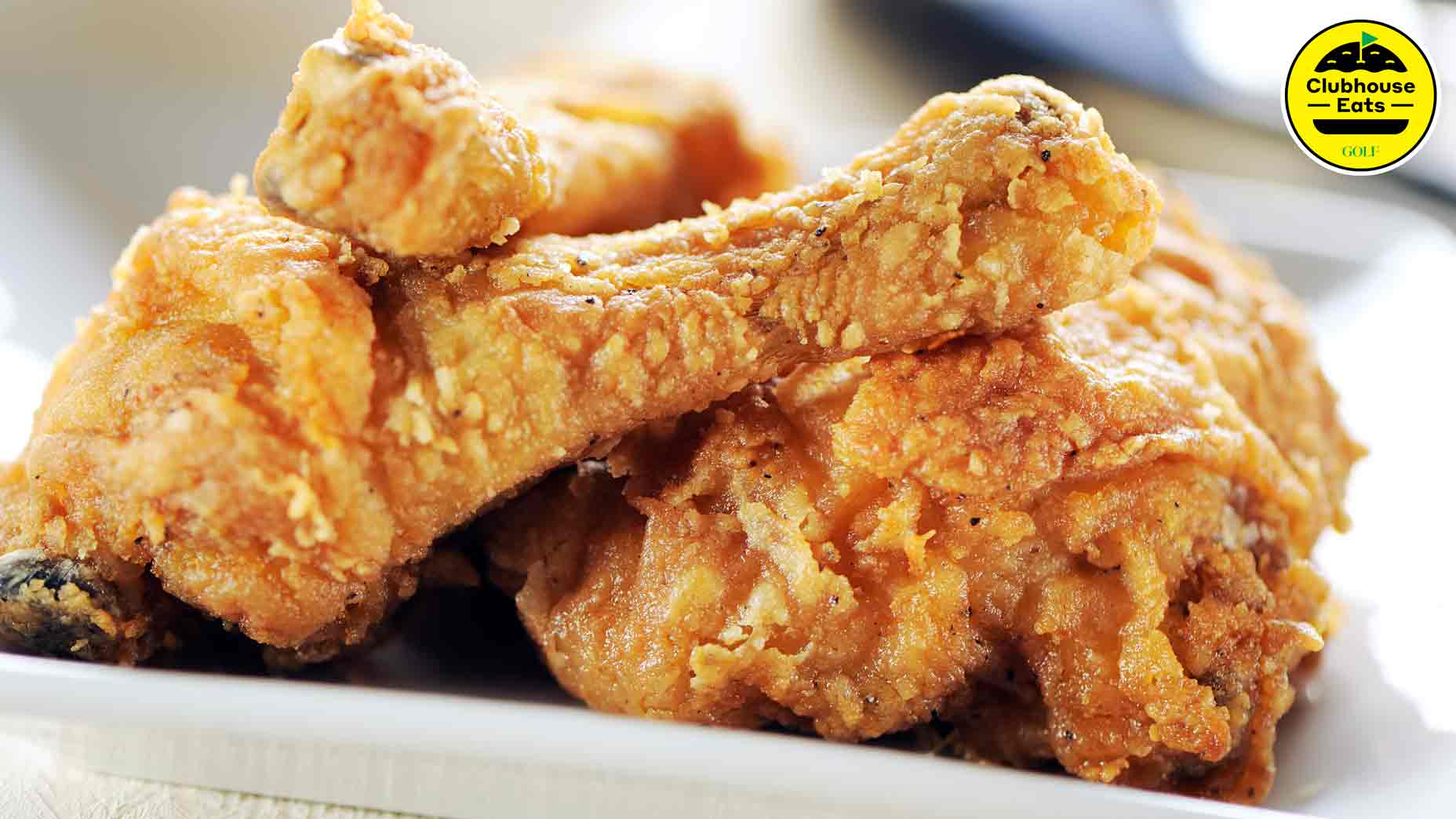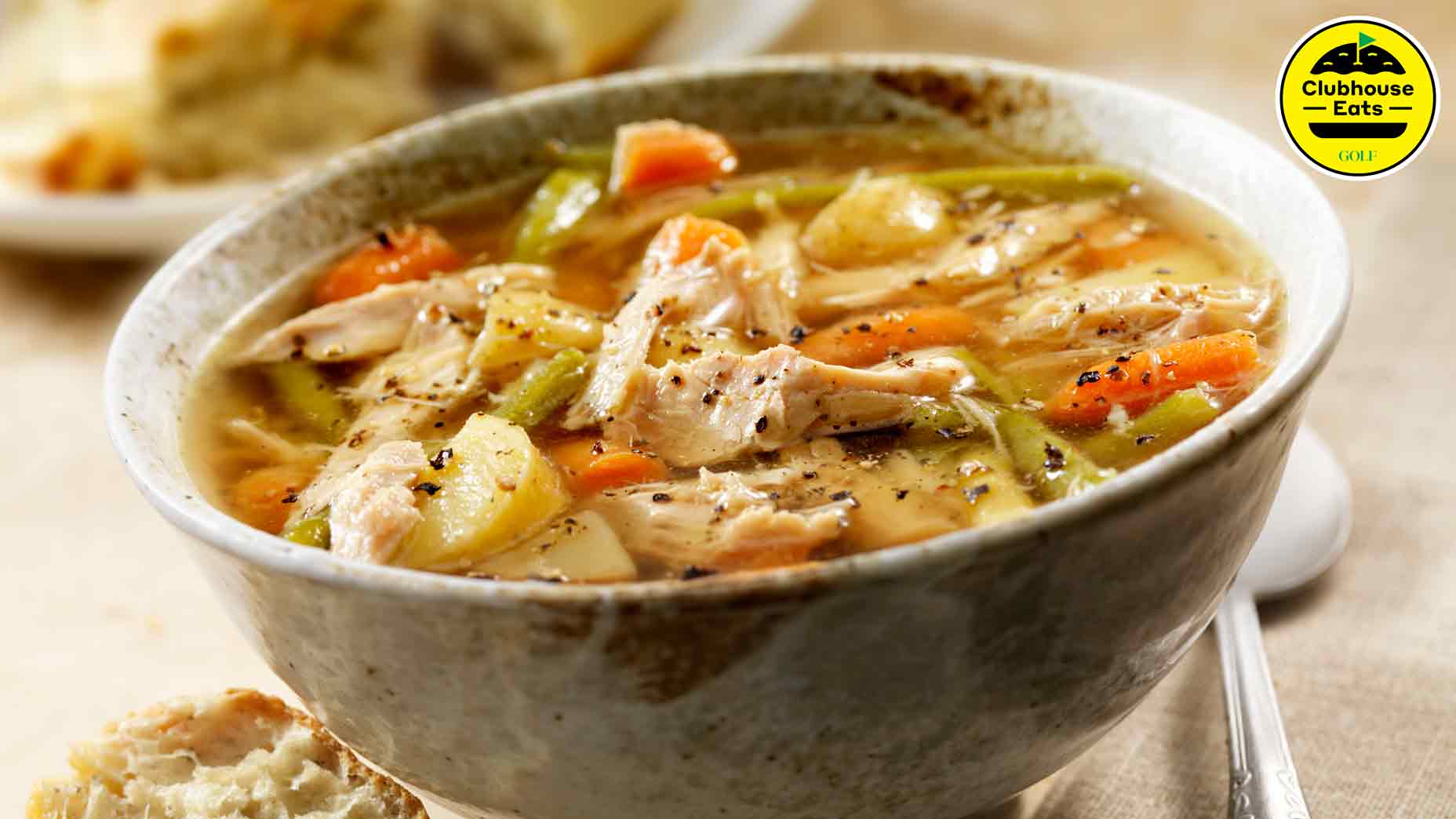
You, too, can make perfect fried chicken at home.
Getty Images
Welcome to Clubhouse Eats, where we celebrate the game’s most delectable food and drink. Hope you brought your appetites.
***
Whether the chicken came before or after the egg is unimportant.
What matters is that the chicken exists today.
Without it, after all, we would not have fried chicken, and who among would want to live like that?
If there’s a drawback to the dish, it’s that it can be daunting to prepare at home — messy, time-consuming, yielding mixed results.
Mike Junio is executive chef at Gentle Creek Golf Club, in Prosper, Tex., where they make a mean fried chicken.
We asked him for tips for turning out a crisp and delicious bird.
FIND TIME TO BRINE
This is pretty much a must with poultry, whether you are baking or frying, Junio says. The chef soaks his bird in seasoned buttermilk for at least six hours, and he recommends that you do the same. Feel free to leave the chicken in the brine for as long as 48 hours, in fact. “The lactic acid breaks down the protein walls and allows the chicken to soak in more moisture,” he says, producing a juicier, more flavorful result.
BATTER UP!
Just prior to frying, Junio dredges the chicken in all-purpose flour. For a thicker coating, he dunks the floured chicken back into the buttermilk, and then dredges it again. How you season is a matter of taste. But Junio favors a blackening seasoning, composed of a range of spices including cayenne pepper, thyme, and ground chili peppers.
THE FRYING GAME
In restaurant kitchens, deep fryers are essential. There’s no substitute, Junio says. But you can approximate the results at home with a deep cast-iron pan or a Dutch oven, large enough to hold all the chicken without crowding. You don’t want the pieces sticking together. Fill the pan or Dutch oven with enough oil so that the chicken is completely covered, but not so high that you’ll get pour-over as you fry. The trick, Junio says, is maintaining the temperature of the oil at 350 degrees. (Too hot, and you’ll get a crisp outside and an undercooked inside; too cool, and you won’t get a beautiful, golden fry.) On a stovetop, this can require trial and error. To avoid guesswork, Junio highly recommends an infrared thermometer.
DARK OR LIGHT? BONE-IN, BONE OUT?
Dark and light meat are pretty much the same to fry, Junio says, though dark meat has more moisture, so it doesn’t dry out as easily. Bone-in chicken has the benefit of being juicier and more flavorful. The only potential hitch is that meat around the bone takes longer to cook, so it might remain undercooked when the rest of the chicken is finished. A remedy for this, Junio says, is to finish off the chicken in an oven preheated to 350 degrees.
OIL CLEANUP
What to do with all that extra oil? Pouring it down the drain is bad for your pipes. Pouring it outside in the dirt is bad for your yard. Pouring it your trash can creates a greasy mess. One way to go is to wait for it to cool and then soak it up with paper towels. But Junio also recommends pouring the cooled oil over the leftover flouring, which clumps up to make for easier handling.










